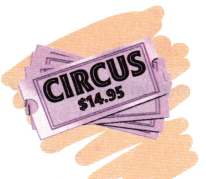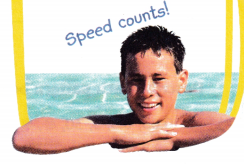All the solutions provided in McGraw Hill My Math Grade 5 Answer Key PDF Chapter 6 Check My Progress will give you a clear idea of the concepts.
McGraw-Hill My Math Grade 5 Chapter 6 Check My Progress Answer Key
Check My Progress Page No. 409-410
Vocabulary Check
Draw lines to match each word(s) with its correct description or meaning.
 Answer:
Answer:

Explanation:
In mathematics, compatible numbers are the numbers,
that are easy to add, subtract, multiply, or divide mentally.
Compatible numbers are close in value to the actual numbers,
that make estimating the answer and computing problems easier.

Estimation means approximating a quantity to the required accuracy.
This is obtained by rounding off the numbers involved in the calculation and getting a quick and rough answer.
For example; 6.3 = estimated to 6.
The term “product” refers to the result of one or more multiplications.
For example, if we multiply 2 and 5 together we get a product of 10.
Concept Check
Estimate each product.
Question 4.
$1.80 × 8
Answer:
$16
Explanation:
Given, $1.80 x 8 = $14.4
To estimate the product, we first round off the multiplier and the multiplicand to the nearest tens, hundreds, or thousands and then multiply the rounded numbers.
To estimate the product, to the nearest whole number.
If the tenths place is less than 5, we round down to the nearest whole number.
So, $1.80 as 2 and then multiply with 8 to get the product as 16.
Question 5.
$2.83 × 7
Answer:
$21
Explanation:
Given, $2.83 x 7 = $19.81
To estimate the product, we first round off the multiplier and the multiplicand to the nearest tens, hundreds, or thousands and then multiply the rounded numbers.
If the tenths place is more than 5, we round up to the nearest whole number.
So, $2.83 as $3 and then multiply with 7, we get 21.
Multiply. Check for reasonableness.
Question 6.
![]()
Answer:
product = 15.2
Estimate = 16
Explanation:
Perform the actual multiplication by multiplying 1.9 x 8 to get the product 15.2.
By rounding the number 1.9 to nearest tenth as 2, then multiply with 8 we get 16.
Subtract the smaller number from the larger one to check for reasonableness.
16 – 15.2 = 0.8
Question 7.
![]()
Answer:
product = 23.8
Estimate = 21
Explanation:
Perform the actual multiplication by multiplying 3.4 x 7 to get the product 23.8.
By rounding the number 3.4 to nearest tenth as 3, then multiply with 7 we get 21.
Subtract the smaller number from the larger one to check for reasonableness.
23.8 – 21 = 2.8
Question 8.
2.3 × 2 = ____________
Answer:
product = 4.6
Estimate = 4
Explanation:
Perform the actual multiplication by multiplying 2.3 x 2 to get the product 4.6.
By rounding the number 2.3 to nearest tenth as 2, then multiply with 2 we get 4.
Subtract the smaller number from the larger one to check for reasonableness.
4.6 – 4 = 0.6
Question 9.
0.24 × 5 = ____________
Answer:
product = 1.2
Estimate = 0.2
Explanation:
Perform the actual multiplication by multiplying 0.24 x 5 to get the product 1.2.
By rounding the number 0.24 to nearest tenth as 0.2, then multiply with 5 we get 1.
Subtract the smaller number from the larger one to check for reasonableness.
1.2 – 1 = 0.2
Problem Solving
Question 10.
Jorge bought 8 pounds of ground beef for $3.29 a pound. About how much did he pay altogether?
Answer:
$24
Explanation:
Jorge bought 8 pounds of ground beef.
Cost of each pound = $3.29
Total amount he paid = 3.29 x 8 = 26.32
Estimate to the nearest tenth as,
3 x 8 = $24.
Question 11.
The Marino family bought 4 tickets to the circus. What was the total cost of the tickets?

Answer:
$59.80
Explanation:
The Marino family bought 4 tickets to the circus.
Cost of each ticket is $14.95.
The total cost of the tickets = $14.95 x 4 = $59.80
Question 12.
Wendy paints a rectangular wall that is 10.5 feet tall and 9.2 feet wide. What is the area of the wall that she paints?
Answer:
96.6 feet.
Explanation:
Wendy paints a rectangular wall that is 10.5 feet tall and 9.2 feet wide.
Area of a rectangle = length x width
l = 10.5 feet; w = 9.2 feet.
The total area of the wall that she paints,
10.5 x 9.2 = 96.6 feet.
Question 13.
One pound of tomatoes costs $1.59. How much do 5 pounds of tomatoes cost?
Answer:
$7.95
Explanation:
One pound of tomatoes costs $1.59.
Cost of 5 pounds of tomatoes = 1.59 x 5 = $7.95
Test Practice
Question 14.
Mr. Garner’s gas tank holds 17.5 gallons of gasoline. How much will it cost him to fill up his gas tank if gasoline costs $2.48 per gallon?
(A) $34
(B) $42.16
(C) $43.40
(D) $45.20
Answer:
Option(C)
Explanation:
Mr. Garner’s gas tank holds 17.5 gallons of gasoline.
Cost of one gallon of gasoline is $2.48.
Total cost of 17.5 gallons = 2.48 x 17.5 = $43.40
Check My Progress Page No. 435-436
Identify the multiplication property for each equation.
Associative Property
Commutative Property
Identity Property
Question 1.
1.5 × 2 = 2 × 1.5
Answer:
Commutative Property.
Explanation:
According to the commutative property of multiplication,
changing the order of the numbers we are multiplying, does not change the product.
1.5 × 2 = 2 × 1.5
3 = 3
Question 2.
5.5 × (3 × 10) = (5.5 × 3) × 10
Answer:
Associative property.
Explanation:
To “associate” means to connect or join with something.
The term associative property states that when an expression has three terms,
they can be grouped in any way to solve that expression.
The grouping of numbers will never change the result of their operation.
5.5 × (3 × 10) = (5.5 × 3) × 10
165 = 165
Question 3.
7.8 × 1 = 7.8
Answer:
Identity Property.
Explanation:
The identity property of multiplication states that,
if you multiply any number by 1, the answer will always be the same number.
7.8 × 1 = 7.8
Concept Check
Find each product.
Question 4.
0.87 × 10 = ____________
Answer:
8.7
Explanation:
To multiply by 10, move the digits one place value to the left.
So, 0.87 x 10 = 8.7
Question 5.
0.742 × 100 = _____________
Answer:
74.2
Explanation:
To multiply by 100, move the digits two places to the left.
So, 0.742 x 100 = 74.2
Question 6.
0.22 × 102 = ______________
Answer:
22
Explanation:
Given, 0.22 × 102
102 = 10 x 10 = 100
0.22 x 100 = 22
To multiply by 100, move the digits two places to the left as shown above.
Question 7.
1.5 × 103 = ______________
Answer:
1500
Explanation:
Given, 1.5 × 103
103 = 10 x 10 x 10 = 1000
1.5 x 1000 = 1500
To multiply by 1000, move the digits three places to the left as shown above.
Describe each pattern below. Then find the next two numbers.
Question 8.
0.03, 0.3, 3, 30, ________, _________
Answer:
300 and 3000
Explanation:
Given, 0.03, 0.3, 3, 30,
In the above pattern each number is multiplied with 10.
0.03 x 10 = 0.3
0.3 x 10 = 3
3 x 10 = 30
30 x 10 = 300
300 x 10 = 3000
So, the next two numbers are 300 and 3000.
Question 9.
784.5, 78.45, 7.845, _________, ____________
Answer:
0.7845 and 0.07845
Explanation:
Given, 784.5, 78.45, 7.845, _________, ____________
In the above pattern each number is divided by 10.
784.5 ÷ 10 = 78.45,
78.45 ÷ 10 = 7.845,
7.845 ÷ 10 = 0.7845,
0.7845 ÷ 10 = 0.07845.
So, the next two numbers are 0.7845 and 0.07845.
Estimate each quotient.
Question 10.
12.5 ÷ 5
Answer:
3
Explanation:
12.5 ÷ 5 = 2.5
first use compatible numbers 12.5 as 13.
if the tenth place is 5 or more than 5 round up to the nearest ten.
13 ÷ 5 = 2.6
So, 12.5 ÷ 5 = 2.5 or about 3.
Question 11.
17.2 ÷ 8
Answer:
2
Explanation:
17.2 ÷ 8 = 2.15
first use compatible numbers 17.2 as 17.
if the tenth place is less than 5 round down to the nearest ten.
17 ÷ 8 = 2.125
So, 17.2 ÷ 8 = 2.1 or about 2.
Question 12.
23.7 ÷ 6
Answer:
4
Explanation:
23.7 ÷ 6 = 3.95
first use compatible numbers 17.2 as 17.
if the tenth place is more than 5 round up to the nearest ten.
24 ÷ 6 = 4
So, 23.7 ÷ 6 = 3.95 or about 4.
Problem Solving
Question 13.
Neal is saving $4.25 a week for 100 weeks. How much will he have saved altogether?
Answer:
$425.00
Explanation:
Neal is saving $4.25 a week for 100 weeks.
Total savings altogether,
$4.25 x 100 = $425 or $425.00
Question 14.
Five friends went to the movies. The total cost was $55.91. If the friends split the cost equally, about how much did each person pay?
Answer:
$10 or $12
Explanation:
The total cost of movie tickets was $55.91.
No. of friends = 5
If the friends split the cost equally, each person have to pay,
$55.91 round to the nearest hundred as $50.
$50 ÷ 5 = $10
If we round to nearest tens, then
$00 ÷ 5 = $12
Question 15.
Wendy paints a wall that is 10.5 feet tall and 9.2 feet wide. What is the area of the wall that she paints?
Answer:
96.6 feet.
Explanation:
Wendy paints a rectangular wall that is 10.5 feet tall and 9.2 feet wide.
Area of a rectangle = length x width
l = 10.5 feet; w = 9.2 feet.
The total area of the wall that she paints,
10.5 x 9.2 = 96.6 feet.
Question 16.
Kevin swims 50 meters in 1.1 minutes on his first day of swimming class. He swims the same distance in 0.9 minute a week later. The next week, he swims the same distance in 0.7 minute. If the pattern continues, what will be Kevin’s time one week later?

Answer:
0.5 minutes.
Explanation:
Kevin swims 50 meters in 1.1 minutes on his first day of swimming class.
He swims the same distance in 0.9 minute a week later.
The next week, he swims the same distance in 0.7 minute.
If the pattern continues, what will be Kevin’s time one week later is 0.5
The pattern is decreasing by 0.2 in every week as shown below,
1.1 – 0.2 = 0.9
0.9 – 0.2 = 0.7
0.7 – 0.2 = 0.5
Test Practice
Question 17.
The Weston Laundry washes all the linens for local hotels. In 7 days, they washed 285.38 pounds of towels and 353.47 pounds of sheets. About how many pounds of laundry did they wash each day?
(A) 80 pounds
(B) 100 pounds
(C) 120 pounds
(D) 140 pounds
Answer:
100 pounds.
Explanation:
In 7 days, laundry washed 285.38 pounds of towels and 353.47 pounds of sheets.
Estimate to nearest hundred 285.38 –> 300
Estimate to nearest hundred 353.47 –> 400
300 + 400 = 700 pounds in a week.
About how many pounds of laundry did they wash each day,
700 ÷ 7 = 100 pounds.